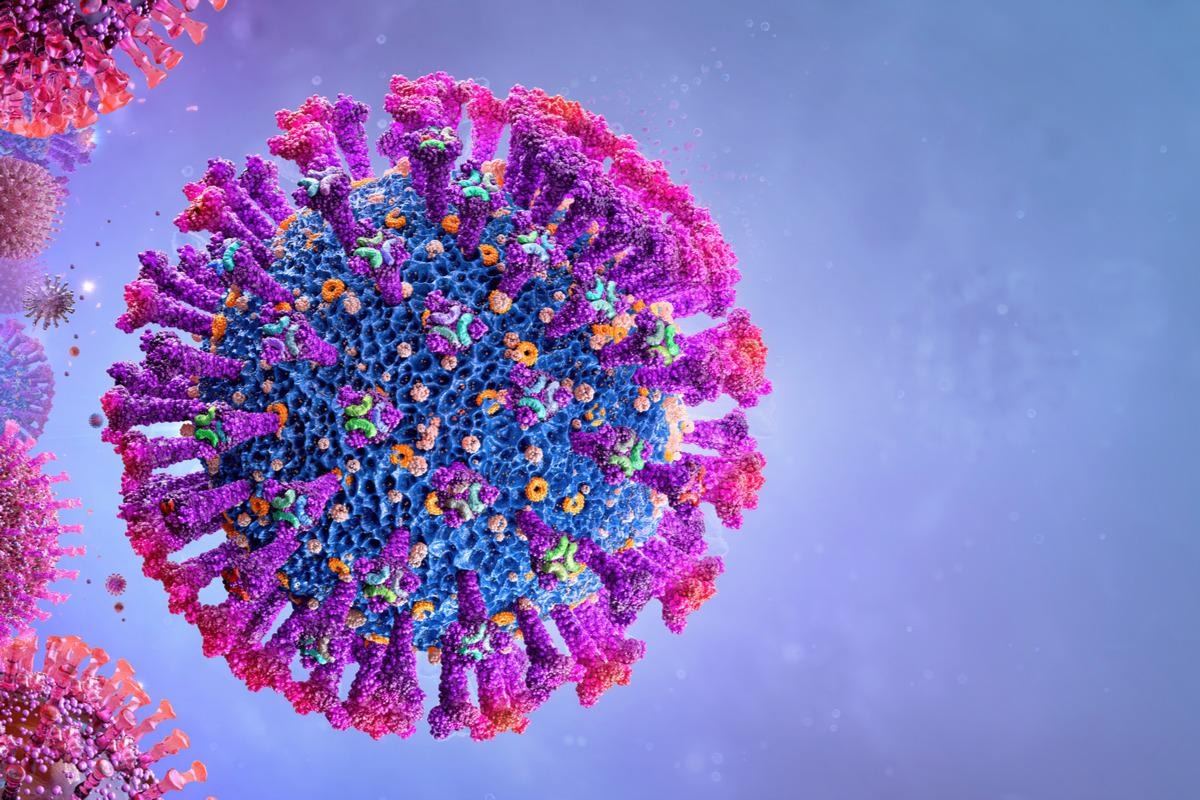Study finds rhinovirus reduces SARS-CoV-2 replication in airway epithelial cells
A recent study conducted at the University of Washington and the Seattle Children’s Research Institute, USA, has demonstrated that severe acute respiratory syndrome coronavirus 2 (SARS-CoV-2) infection induces a significantly lower interferon response than rhinovirus infection.
 Study: Airway epithelial interferon response to SARS-CoV-2 is inferior to rhinovirus and heterologous rhinovirus infection suppresses SARS-CoV-2 replication. Image Credit: Corona Borealis Studio/Shutterstock
Study: Airway epithelial interferon response to SARS-CoV-2 is inferior to rhinovirus and heterologous rhinovirus infection suppresses SARS-CoV-2 replication. Image Credit: Corona Borealis Studio/Shutterstock
Moreover, pre-infection with rhinovirus significantly reduces the replication of SARS-CoV-2 in airway epithelial cells.
A preprint version of the study is available on the bioRxiv* server, while the article undergoes peer review.
Background
SARS-CoV-2, the causative pathogen of coronavirus disease 2019 (COVID-19), is an enveloped RNA virus of the human beta-coronavirus family that primarily affects airway epithelial cells.
Unlike other common cold viruses such as alpha-coronaviruses and rhinoviruses, SARS-CoV-2 suppresses both systemic and mucosal type I and type III interferon responses, which are vital host innate immune responses required for the suppression of viral replication.
According to the available literature, infection of airway epithelium with human rhinoviruses causes a significant increase in anti-viral interferon response, which increases the expression of SARS-CoV-2 host cell entry receptor, namely angiotensin-converting enzyme 2 (ACE2). This indicates that simultaneous infection of epithelial cells with SARS-CoV-2 and rhinovirus might have synergistic consequences.
In the current study, scientists have evaluated the dynamics of type I and type III interferon responses in human airway epithelial cells following SARS-CoV-2 or rhinovirus infection.
Moreover, they have investigated whether pre-infection with rhinovirus can modulate the propagation of subsequent SARS-CoV-2 infection.
Study design
The scientists collected airway epithelial cells from children (age: 6 – 18 years) and older adults (age: 60 – 75 years) and differentiated them to generate organotypic primary airway epithelial cell cultures.
The cultures were mono-infected with SARS-CoV-2 or rhinovirus to determine the virus-specific interferon response.
In addition, the impact of rhinovirus pre-infection on SARS-CoV-2 replication was determined by infecting the cultures first with rhinovirus and subsequently with SARS-CoV-2.
To directly assess the effect of interferon signaling on SARS-CoV-2 replication, a separate set of experiments were conducted by pre-treating the cultures with recombinant interferon β1 and interferon λ2, followed by infection with SARS-CoV-2.
Important observations
In primary cultures generated from pediatric and adult cells, a significant difference in the rate of SARS-CoV-2 replication was observed between donors. Despite this difference, SARS-CoV-2 exhibited a 100-times higher replication efficiency than rhinovirus in primary airway epithelial cell cultures. However, no significant difference in SARS-CoV-2 replication was observed between pediatric and adult cultures. Similarly, no difference in viral replication was observed between cultures generated from children with asthma and healthy children.
Interferon response
In mono-infected cultures, significantly higher expressions of interferon β1, interferon λ2, and CXCL10 genes were observed following rhinovirus infection compared to that following SARS-CoV-2 infection. A similar trend was observed in protein expression.
In pediatric and adult cultures successively infected with rhinovirus and SARS-CoV-2, a significant reduction in SARS-CoV-2 replication was observed after 96 hours of infection. A similar reduction in viral replication was observed in cultures pretreated with interferon β1 or interferon λ2.
Mechanism of escaping host innate immune response
In the innate immune system, pattern recognition receptors play a vital role in sensing viral RNA and subsequently inducing a cascade of signaling events that ultimately lead to induction of type I and type III interferon responses. An optimal interferon response is the key to eliminating invading viruses at the early stage of infection.
In this study, the expression of IFIH1/MDA5, a pattern recognition receptor, was assessed in SARS-CoV-2- or rhinovirus-infected cultures to understand the mechanism of immune evasion by SARS-CoV-2.
The findings revealed that rhinovirus infection causes a significantly higher expression of IFIH1/MDA5 (more than 2-fold) compared to SARS-CoV-2 infection. This observation indicates that SARS-CoV-2 evades the host's innate immune response by suppressing viral sensing by pattern recognition receptors.
Study significance
The study reveals that the interferon response induced by SARS-CoV-2 in airway epithelial cells is significantly lower than that induced by rhinovirus. Moreover, prior exposure to rhinovirus or recombinant interferons can significantly reduce the SARS-CoV-2 replication in airway epithelial cells.
As observed in the study, SARS-CoV-2 gains replication fitness in epithelial cells by suppressing the viral sensing mechanism of the innate immune system.
*Important notice
bioRxiv publishes preliminary scientific reports that are not peer-reviewed and, therefore, should not be regarded as conclusive, guide clinical practice/health-related behavior, or treated as established information.
-
Vanderwall, E. et al. (2021) "Airway epithelial interferon response to SARS-CoV-2 is inferior to rhinovirus and heterologous rhinovirus infection suppresses SARS-CoV-2 replication". bioRxiv. doi: 10.1101/2021.11.20.469409 https://www.biorxiv.org/content/10.1101/2021.11.20.469409v1
Posted in: Medical Science News | Medical Research News | Disease/Infection News
Tags: ACE2, Angiotensin, Angiotensin-Converting Enzyme 2, Asthma, Cell, Children, Cold, Common Cold, Coronavirus, Coronavirus Disease COVID-19, CXCL10, Enzyme, Genes, Immune Response, Immune System, Interferon, Interferons, Pathogen, Propagation, Protein, Protein Expression, Receptor, Research, Respiratory, Rhinovirus, RNA, SARS, SARS-CoV-2, Severe Acute Respiratory, Severe Acute Respiratory Syndrome, Syndrome, Virus

Written by
Dr. Sanchari Sinha Dutta
Dr. Sanchari Sinha Dutta is a science communicator who believes in spreading the power of science in every corner of the world. She has a Bachelor of Science (B.Sc.) degree and a Master's of Science (M.Sc.) in biology and human physiology. Following her Master's degree, Sanchari went on to study a Ph.D. in human physiology. She has authored more than 10 original research articles, all of which have been published in world renowned international journals.
Source: Read Full Article
